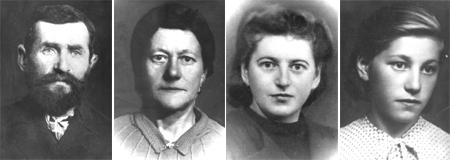
Family of Isak Borenstein
The family name Borenstein had been spelled “Borensztajn” in Poland. The Borenstein family consisted of six children: three boys and three girls. After the war Isak went back to the house, which was now occupied by another family. Inside he saw his parent’s furniture, and when he asked the occupants to return his family’s photographs, they told him that they had all been burned. Isak then went to the RadomRadom: a city in central Poland of about 100,000 population before World War II, approximately one-third Jewish.
After Radom was seized by the German army on September 8, 1939 it was incorporated within the Generalgouvernement. The Generalgouvernement was a German administrative unit which was organized in occupied central and southern Poland but not directly incorporated into the German Reich.
Anti-Jewish persecutions and abductions to forced labor preceded the establishment in March, 1941 of the Radom ghetto. Allotted rations in the ghetto were 100 grams (3.5 oz) of bread daily per person. Hundreds were shot attempting to smuggle food in from the outside. Eventually, most of the ghetto residents were deported to Treblinka extermination camp. A few hundred Jewish survivors returned after the war to settle in Radom, but soon left the city. Source: Encyclopedia of the Holocaust. city archives and removed the photographs shown here, which had been taken for identity cards. The portrait of Samuel was taken in 1939 when Isak’s father was 49. The portraits of his sisters, Hannah and Lola, were taken in 1942.
Photo Credit: Isak Borenstein